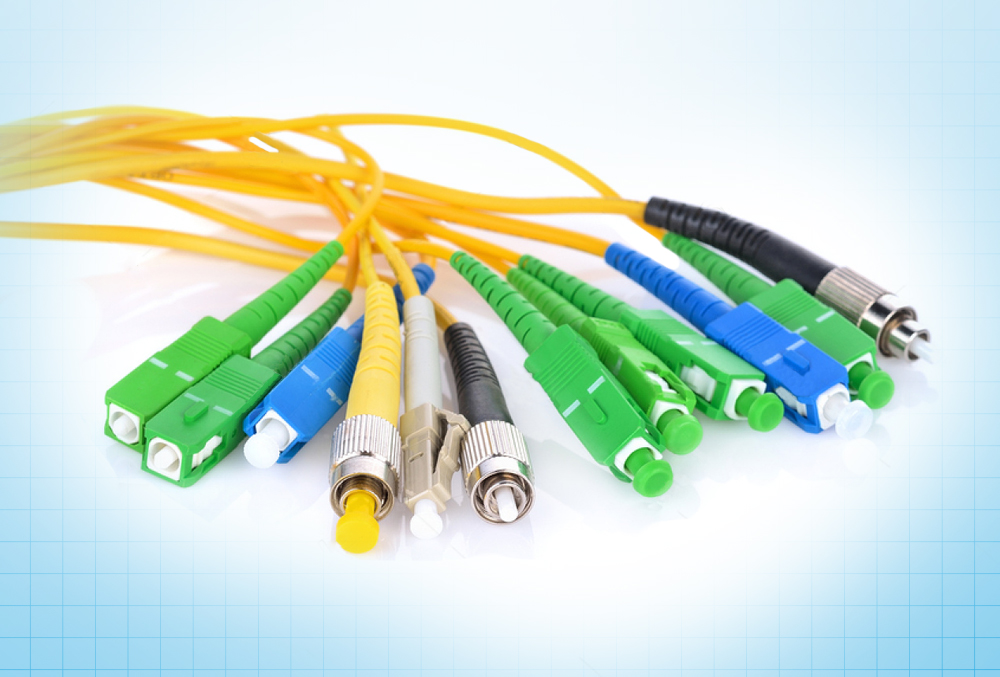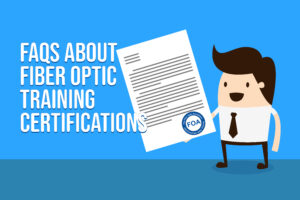Fiber optics is renowned among business organizations for the high bandwidth and low latency that it provides. But like every other equipment, regular cleaning and maintenance are necessary to ensure the consistency of its performance. And according to certified fiber optic technicians, one of the crucial preventive maintenance procedures for the optical network is the cleaning of fiber optic connectors.
There are two techniques you can apply to clean your connectors:
Dry Cleaning
The purpose of the dry cleaning technique is to get rid of light debris, dust, and black spots. In order to perform this technique, it is necessary to have a reel-based cassette cleaner. This cleaner will be used with medium pressure to wipe the connector end face. As you do this, it’s important to take note that you should wipe it in one direction. This technique is usually the first method used when cleaning the connectors. Moreover, it also enables you to remove airborne contamination.
If you’re using an angled physical contact or APC polished connectors, you should see to it that the entire end face of your connector gets in contact with the cleaning cloth. That way you’ll be able to use the dry cleaning technique to effectively clean your fiber optic connectors.
Wet Cleaning
Aside from the dry cleaning technique, you can also use the wet cleaning technique to keep your connectors clean. This technique enables you to remove connector contaminations that are oily or grease-like. To apply this, you will need a lint-free wipe and a fiber optic cleaning solution. After gathering these materials, it’s time for you to moisten a portion of your wipe lightly with the said solution. As you wipe the end face of your connector, it’s important to remember to apply medium pressure. Moreover, you can also clean the potential residue on the end face in the dry area of your wipe.
What Happens When Your Fiber Optic Connectors Are Contaminated?
 Often times, business owners overlook the importance of regular fiber optic connector cleaning and maintenance. Little do they know, that even just a micrometer of a dust particle can cause severe network problems like strong back reflections and signal loss. That said, fiber contamination—regardless if the contamination is loose, rigid or dry—has the ability to cause the premature failure of your whole system.
Often times, business owners overlook the importance of regular fiber optic connector cleaning and maintenance. Little do they know, that even just a micrometer of a dust particle can cause severe network problems like strong back reflections and signal loss. That said, fiber contamination—regardless if the contamination is loose, rigid or dry—has the ability to cause the premature failure of your whole system.
Now that you’re aware why it’s crucial to keep your fiber optic connectors clean, it’s time for you to learn the proper way to clean them.
Preparations for Fiber Optic Connector Cleaning Process
There are certain things that you need to do first before you start your fiber optic connector’s cleaning process. With this preparation, it’ll be a guarantee that your connectors will be cleaned properly.
Here is a list of things you need to know before you begin your cleaning process:
- At the beginning of your cleaning process, it’s necessary to inspect your connectors or adapters carefully.
- Make use of a connector housing to perform the plugging or unplugging of your fiber.
- Ensure that you turn off all laser sources before you start your fiber connector’s cleaning process.
- See to it that you disconnect the pluggable receiver you connected to your chassis and remove the cables you’re using at both ends.
- Make sure to store your unused protective caps in a container that is resealable. By doing this, you will be able to avoid dust from transferring on your fiber.
- Don’t reuse the tissues or swabs that you utilized during the cleaning process.
Proper Cleaning Procedure for Connectors
Once you’re done preparing for the cleaning procedure you’re going to make, it’s time for you to learn the proper way to clean your fiber optic connectors. This step-by-step guide will help you maintain your equipment and extend your fiber optic network’s lifespan.
Step 1: Use a fiberscope to inspect the fiber optic connector.
Step 2: If you find out that the connector is dirty, use the dry cleaning technique.
Step 3: After doing the dry cleaning technique, inspect the connector once again to check if you missed a spot. If it’s still dirty then repeat the dry cleaning technique.
Step 4: If the connector remains dirty after dry cleaning, then you have to use the wet cleaning technique.
Step 5: Apply the dry cleaning technique again after cleaning the face end with the lightly moistened lint-free wipe.
Step 6: Examine the connector again and repeat steps 3 and 4 until the end face of your connector is clean.
Unreliable Cleaning Methods You Should Avoid
If you want to ensure that your fiber optic remains reliable throughout the years, it’s vital that you follow the proper procedures in cleaning your connectors. When you settle with inferior cleaning processes, you are bound to cause damage to the equipment you’re using—and you will certainly suffer the inconvenience that this brings. For this reason, it’s advised by experts to avoid these two unreliable methods of cleaning.
Cleaning Connectors with Isopropyl Alcohol
Most operators these days make use of isopropyl alcohol when they are cleaning their fiber connectors. Unfortunately, this type of alcohol is a poor solvent for some of the soils that come with fiber installations. Apart from that, it is also a slow evaporator—and it can cause a halo kind of contamination on the connector’s end face. Moreover, isopropyl alcohol also has the tendency to leave a residue when it’s not followed by a wipe or swab. That said, the utilization of isopropyl alcohol can further contaminate the surface of the end face when it’s not done carefully. Therefore, it is an unreliable cleaning method that you should avoid.
 Using Excessive Solvent When Wet Cleaning
Using Excessive Solvent When Wet Cleaning
As mentioned, the utilization of a fiber optic solvent is necessary when you’re wet cleaning. However, it’s counterproductive if you use too much of it. Instead of cleaning your connector’s end face, an excessive amount of solvent can cause cross-contamination. That’s why it’s important to keep in mind that only a small amount of solvent is required to dissolve the dirt on the end face—especially because high-quality optical fiber cleaners are designed to evaporate quickly. Furthermore, it also takes a little amount to break the static charge on the end face. That said, the usage of excessive solvent while wet cleaning is another unreliable cleaning method that you should stop doing.
Common Mistakes When Cleaning a Fiber Optic Connector
Apart from the unreliable cleaning methods mentioned above, there are also other common mistakes that you should avoid when you’re cleaning your fiber optic connectors. By avoiding these practices, you will be able to ensure your system’s stability and effectivity. Furthermore, it will also enable you to extend your fiber optic connectors’ life span.
- Avoid touching your fiber optic products if it’s unnecessary.
- Disconnect the end face when you’re cleaning your connectors.
- Refrain from forcefully twisting or pulling your fiber cable at all times.
- Make sure that your system lasers are off before you connect your fiber to a fiberscope.
- When you’re cleaning your connectors, ensure that you don’t touch the cleaned area with a tissue, swab, or any other cleaning fabric.
- Never reuse any of the tissues or swabs you utilized.
- Avoid touching a portion of the tissue or swab you’re using.
- See to it that you don’t use alcohol when you’re around a spark or an open flame.
- Don’t apply the wet cleaning procedure if you can’t ensure that it won’t leave a residue on the connector’s end face.
- Don’t make use of unfiltered focusing optics or handheld magnifiers when you’re inspecting your fiber connectors.
Reasons Why it is Fundamental to Keep Fiber Optic Connectors Clean
Although there is no known cleaning procedure today that can ensure that your fiber connectors will be 100% clean, it’s crucial to maintain its cleanliness regularly. The mere presence of dirt on your connector’s end face can cause your fiber connection to slow down and it can also inhibit dreadful network traffic. That said, you will be able to enjoy a fiber network that’s working efficiently and effectively when you keep your connectors clean.
Even though this is true, it’s also essential to practice the proper cleaning methods when you clean your fiber optic connectors. How you maintain the cleanliness of your fiber optic connections can create a huge impact on the performance of your optical communication network. Aside from allowing your network to operate smoothly, this also helps you avoid causing damage to your equipment.
So it’s not enough to just let accredited fiber optic technicians set up your business’ fiber-optic network, you should also turn to them for proper cleaning and maintenance. With the kind of training they underwent to be certified, they will be able to keep your network working smoothly for your company. This can give you the peace of mind that the money you invest in this installation will not be put to waste. Empower your business now with fiber optics and enjoy the higher bandwidth and faster internet connection that you deserve.



